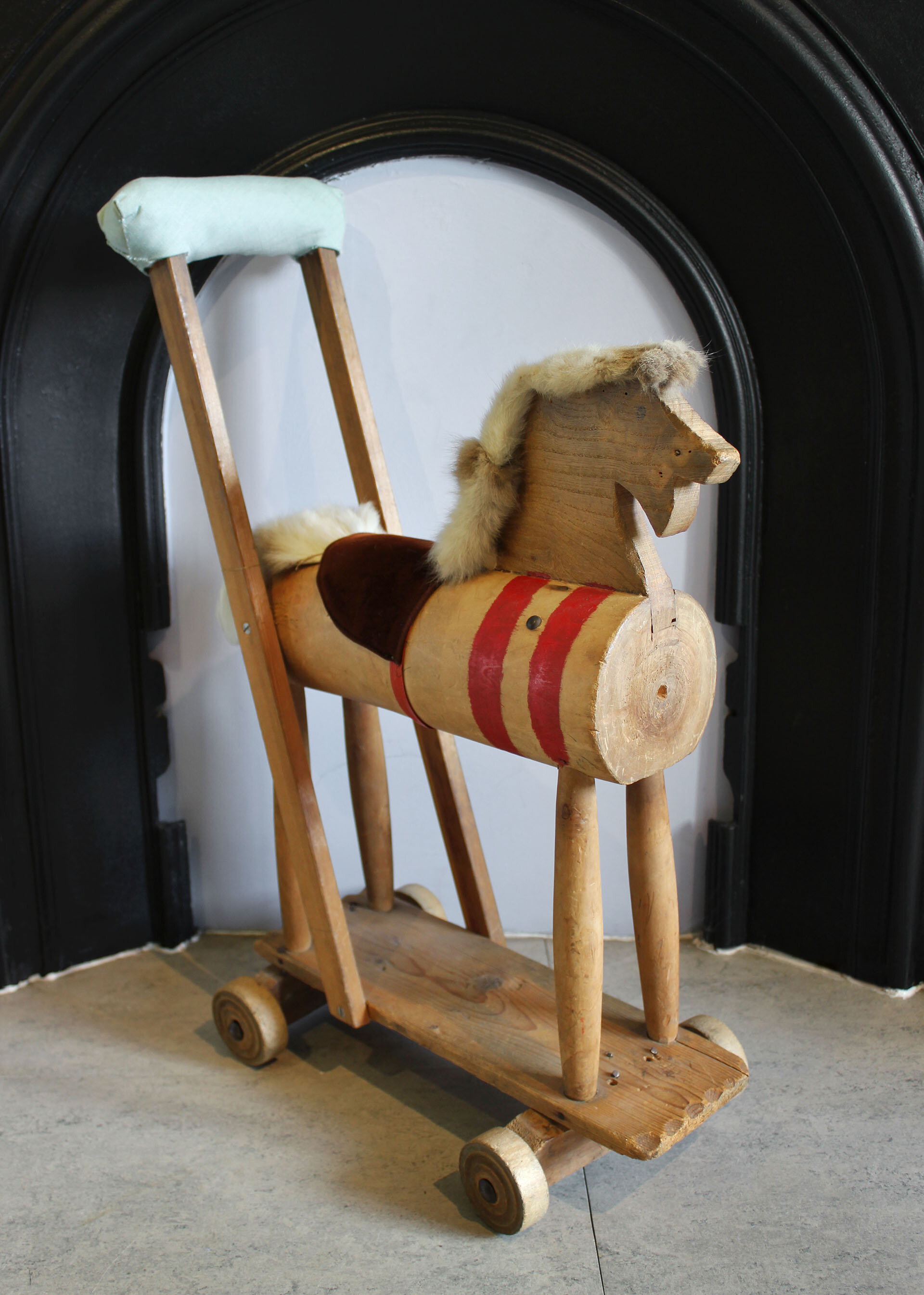Hold Your Horses
/This child’s ride-on horse was donated by a local resident in 1972. It appears to be handmade, mostly of wood with a fur mane and velvet and felt saddle. It probably dates from around 1900 and has been repaired and modified during its lifetime. It was most likely passed down and played with by multiple generations.
1972.268
In 1902 (about the time our horse was made), a soft toy bear with moving joints was created by Richard Steiff. In the USA it became known as the Teddy Bear after president Theodore “Teddy” Roosevelt. It had mohair fur, paws made from felt, linen or cotton, glass eyes and filled out inside with wool, cardboard and metal pins. In 1907 wind-up cars were invented and the first Hornby train was made, both predominantly made from metal. Dolls of this time were made from papier mache, china, rubber or wax. The plastic toy revolution came after World War Two, when plastic technology developed and producers for the wartime military market looked for a new outlet. As the 20th century progressed, plastic and synthetic materials increasingly replaced traditional materials such as wood, metal and natural textiles.
Today plastic toys account for 90% of the market. Plastic offers many benefits being affordable, colourful and easy to clean. Most toys are not single use either, many toys can last 15 to 20 years before entering the waste stream, especially if they are passed on. However (as we have learnt in previous Sustainable Stories) plastic is made from fossil fuels, the manufacturing process leads to harmful emissions and it takes 100s to 1000s of years to break down. Many modern toys are made of different components making them difficult to recycle. Therefore plastic toys are a big part of the plastic ending up in landfill and in the sea. The issue is made worse with poor quality plastic toys, made for cereal boxes or party bags, that aren’t made to last and quickly end up in landfill.
Some companies are starting to make plastic sourced from sugarcane, or other plant based and biodegradable options. Others are focusing on producing good quality toys that last a long time, and which at the end of their life can be separated into different materials for recycling. More companies are producing toys made from wood, offering a more durable and biodegradable product. However it isn’t a straight forward switch for consumers. Toys made from MDF may look like natural wood but actually contain chemicals such as formaldehyde and adhesives. Natural wood is only better for the environment if it comes from a sustainable source. Good labelling with the necessary certifications indicates that the wood used is not contributing to illegal logging and deforestation. Some companies are using repurposed or reclaimed wood to make their toys, such as rubberwood, a waste product of the latex industry.
While navigating the sustainable toy market might be tricky and expensive, there are plenty of opportunities to buy second hand. Pre-loved toys can be easily and affordably picked up at nearly new sales and through online auction sites and social media groups. There are also opportunities to borrow from a toy libraries or join a toy subscription scheme. So although some really old toys might not meet modern health and safety standards, we can learn from the way they were built to last and be passed on to be played with again.




